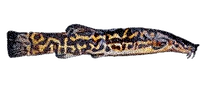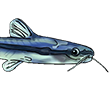https://link.springer.com/article/10.10 ... 24-09919-2
The paper states that only eight cases of "natural hybrids" have been documented. The "natural" hybrids reported in this paper include all of the following:Abstract
Hybridization, defined as the crossing between individuals from different populations, is a common phenomenon in fishes. Moreover, many fish hybrids have been developed to be used in aquaculture. Among these, catfish order Siluriformes is one of the most numerous groups of fishes, with some interspecific natural and anthropogenic crosses reported. We conducted a systematic review of studies on catfish hybridization published up until 2023, recovering 158 relevant papers with 80 crosses reported. More than 90% of these studies referred to anthropogenic hybridization, mostly reporting hybrids used in aquaculture, and only 8% referred to natural hybridization. The capacity for interspecific hybridization within catfish is demonstrated, with reports of crosses even among highly divergent species, suggesting potential alloploidization changes and epigenetic mechanisms facilitating such crosses. Nonetheless, further exploration using genomic approaches is needed to prove these hypotheses. Morphology was the most common method of catfish hybrid inference (26.6%), followed by mitochondrial DNA markers (16.3%), karyology (10.9%), and other DNA- and protein-based methods. Despite the large amount of research, a lack of genomic studies is highlighted here, with only one paper using genomics for hybrid inference. We highlight that the use of genomics can help to disentangle evolutionary history of catfish hybridization and to understand the negative impact of anthropogenic hybridization over threatened catfish species. The use of genomic tools will help to provide deeper insights into catfish hybridization, thereby informing conservation efforts and sustainable aquaculture practices.
- ×
- The authors think this might be an erroneous report
- ×
- x
- x
- The authors think this may be influenced by human activity
- x extinct sp.
- haplotype BCA × haplotype GDD
- The authors suspect P. chagresi is a species complex, with species potentially hybridizing across the range
- x n. sp. 2
- x n. sp. 1
- Arius dussumieri = Arius tenuispinus x
- The authors' taxonomic name choices are out of date: Arius dussumieri = and Arius tenuispinus =



















